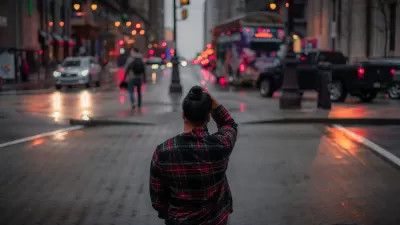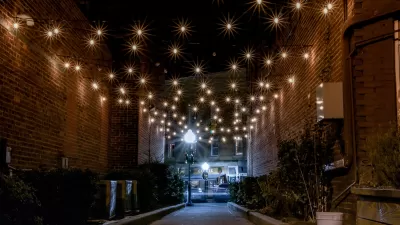Supported by imagery of human urban conduct, Chuck Wolfe argues that walkable is good, but sit-able is better—and that "it’s time for the next big focal point and the next big idea, the 'Sit-able City'."

Drawing on the tradition of observers of urban, human conduct, Wolfe suggests that complementing the "walkable" with a more purposeful focus on the "sit-able" would lead to a more holistic and enhanced understanding of place, over and above implementation of pop-up and tactical urbanism tools:
[S]it-able places are key, interdisciplinary focal points where the delight of “placemaking” and cultural traditions of “watching the world go by” merge with the sometimes conflicting domains of law and politics, economic development, public safety, gentrification and the homeless.
Noting how perceptions of public safety, "sit and lie" ordinances, and related social justice issues are often at the center of political and downtown revitalization debates, Wolfe concludes:
[A] greater focus on the sit-able is an invitation to rich discussion and ready illustration based on human tradition... A focus on “sit-abilty” could be a game-changer, and encourage a richer conversation about why, ironically, we sometimes have second thoughts about a rest stop in the reinvented, walkable cities of today.
FULL STORY: why the "sit-able city" is the next big idea

Study: Maui’s Plan to Convert Vacation Rentals to Long-Term Housing Could Cause Nearly $1 Billion Economic Loss
The plan would reduce visitor accommodation by 25,% resulting in 1,900 jobs lost.

North Texas Transit Leaders Tout Benefits of TOD for Growing Region
At a summit focused on transit-oriented development, policymakers discussed how North Texas’ expanded light rail system can serve as a tool for economic growth.

Why Should We Subsidize Public Transportation?
Many public transit agencies face financial stress due to rising costs, declining fare revenue, and declining subsidies. Transit advocates must provide a strong business case for increasing public transit funding.

How to Make US Trains Faster
Changes to boarding platforms and a switch to electric trains could improve U.S. passenger rail service without the added cost of high-speed rail.

Columbia’s Revitalized ‘Loop’ Is a Hub for Local Entrepreneurs
A focus on small businesses is helping a commercial corridor in Columbia, Missouri thrive.

Invasive Insect Threatens Minnesota’s Ash Forests
The Emerald Ash Borer is a rapidly spreading invasive pest threatening Minnesota’s ash trees, and homeowners are encouraged to plant diverse replacement species, avoid moving ash firewood, and monitor for signs of infestation.
Urban Design for Planners 1: Software Tools
This six-course series explores essential urban design concepts using open source software and equips planners with the tools they need to participate fully in the urban design process.
Planning for Universal Design
Learn the tools for implementing Universal Design in planning regulations.
City of Santa Clarita
Ascent Environmental
Institute for Housing and Urban Development Studies (IHS)
City of Grandview
Harvard GSD Executive Education
Toledo-Lucas County Plan Commissions
Salt Lake City
NYU Wagner Graduate School of Public Service




























